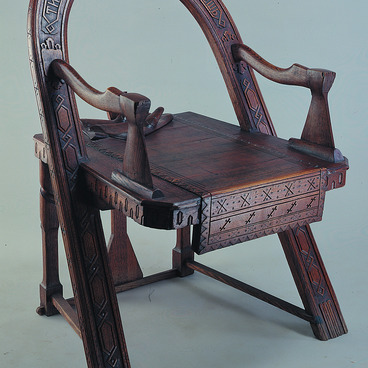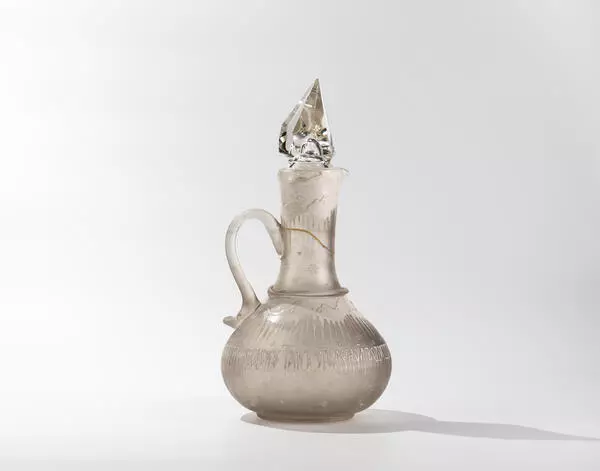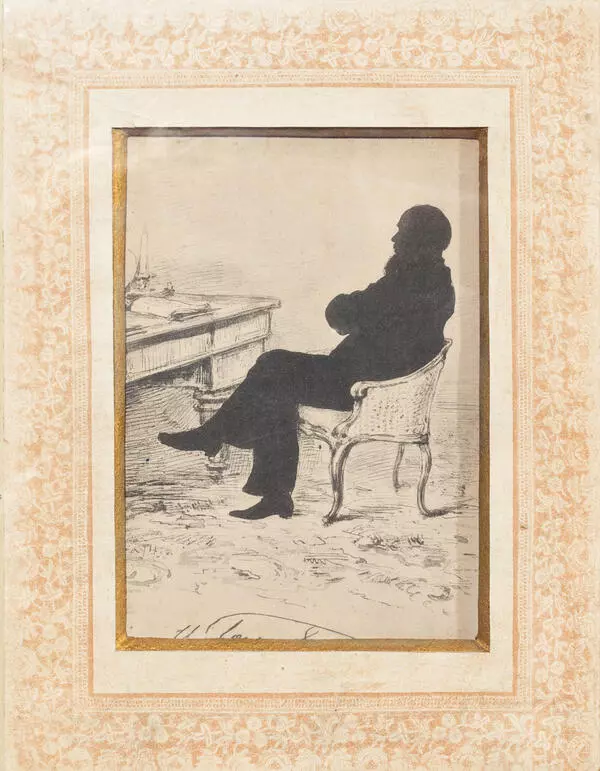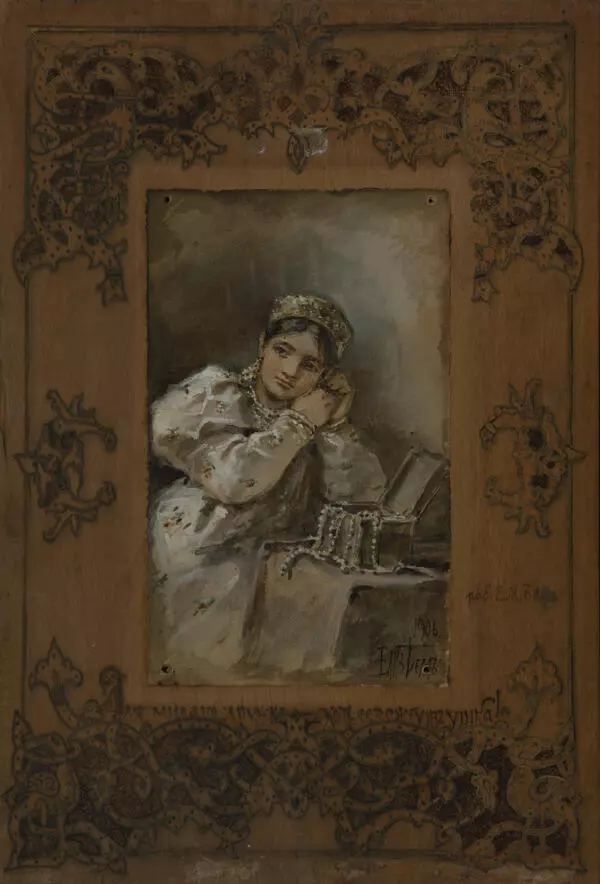The exposition presents a loving cup in a pseudo-Russian style by Elizaveta Boehm. A loving cup (bratina in Russian) is a large vessel in which, starting from the 16th century, alcoholic beverages were served at feasts ‘for all the brethren’.
One of the main directions that make up the Russian style is associated with the search for national roots in folk peasant art, which was clearly manifested in the decor of objects from the 1860s — early 1890s. Products created in the pseudo-Russian style have traditional for Russia forms of household utensils with painted and carved ornaments and national embroidery. At this time, a variety of vessels were produced — ladles, mugs, decanters, loving cups, salt shakers, sugar bowls, the source of inspiration for which was folk arts and crafts.
Such items were produced at the Maltsovs' Dyatkovo Crystal Factory based on sketches by the famous artist, graphic artist, illustrator Elizaveta Boehm (1843–1914). Many people know Elizaveta Boehm as the author of picturesque postcards depicting scenes from the life of village children. Until now, the images created by the artist for pre-revolutionary postcards are reproduced in large quantities. Since the 1890s, after a visit to the Dyatkovo Crystal Factory, where her brother was the director, Elizabeth Boehm began to create sketches for glass items, which were very successful and gained acceptance at numerous exhibitions, for example, at the World Exhibitions in Chicago in 1893 and at 1900 Paris Exhibition.
In addition, Elizaveta Boehm created forms for utensils, focusing on ancient Russian samples: cups, ladles, loving cups. Most commonly, while painting products herself, the artist left various Russian proverbs and sayings, humorous inscriptions, short poems among the ornament. At the turn of the 19th and 20th centuries, Boehm was one of the few professional artists who worked in the glass painting technique.
A loving cup with the inscription ‘Have a cup and be healthy’. created according to her sketch, was made at the Maltsovs' Dyatkovo Crystal Factory at the end of the 19th century from three-layer glass (colorless, milky and blue) and painted with black and ocher enamel with gold. This is one of Boehm’s most famous works in glass in the pseudo-Russian style, which was also produced from glass of other colors and with other types of painting.
One of the main directions that make up the Russian style is associated with the search for national roots in folk peasant art, which was clearly manifested in the decor of objects from the 1860s — early 1890s. Products created in the pseudo-Russian style have traditional for Russia forms of household utensils with painted and carved ornaments and national embroidery. At this time, a variety of vessels were produced — ladles, mugs, decanters, loving cups, salt shakers, sugar bowls, the source of inspiration for which was folk arts and crafts.
Such items were produced at the Maltsovs' Dyatkovo Crystal Factory based on sketches by the famous artist, graphic artist, illustrator Elizaveta Boehm (1843–1914). Many people know Elizaveta Boehm as the author of picturesque postcards depicting scenes from the life of village children. Until now, the images created by the artist for pre-revolutionary postcards are reproduced in large quantities. Since the 1890s, after a visit to the Dyatkovo Crystal Factory, where her brother was the director, Elizabeth Boehm began to create sketches for glass items, which were very successful and gained acceptance at numerous exhibitions, for example, at the World Exhibitions in Chicago in 1893 and at 1900 Paris Exhibition.
In addition, Elizaveta Boehm created forms for utensils, focusing on ancient Russian samples: cups, ladles, loving cups. Most commonly, while painting products herself, the artist left various Russian proverbs and sayings, humorous inscriptions, short poems among the ornament. At the turn of the 19th and 20th centuries, Boehm was one of the few professional artists who worked in the glass painting technique.
A loving cup with the inscription ‘Have a cup and be healthy’. created according to her sketch, was made at the Maltsovs' Dyatkovo Crystal Factory at the end of the 19th century from three-layer glass (colorless, milky and blue) and painted with black and ocher enamel with gold. This is one of Boehm’s most famous works in glass in the pseudo-Russian style, which was also produced from glass of other colors and with other types of painting.





